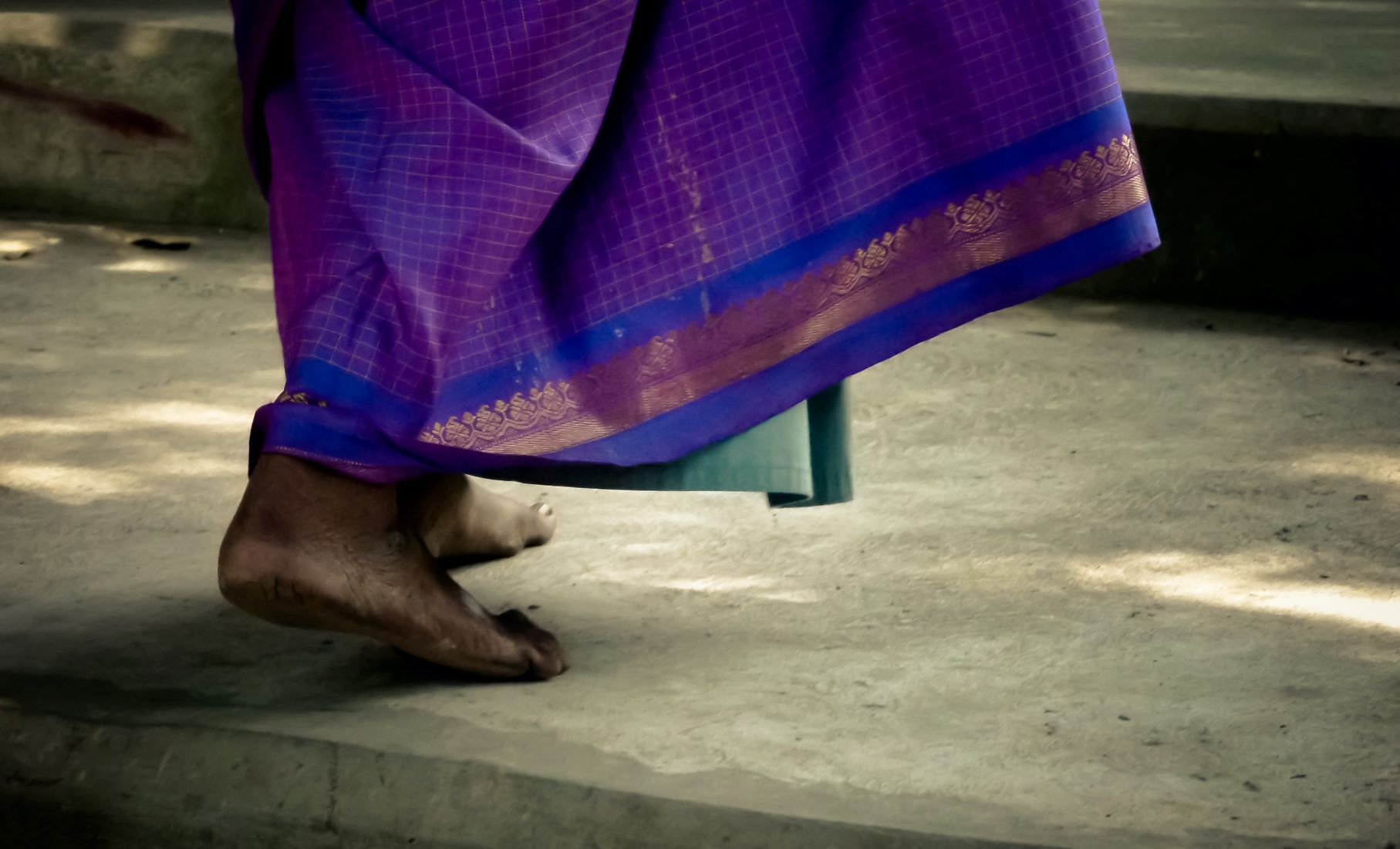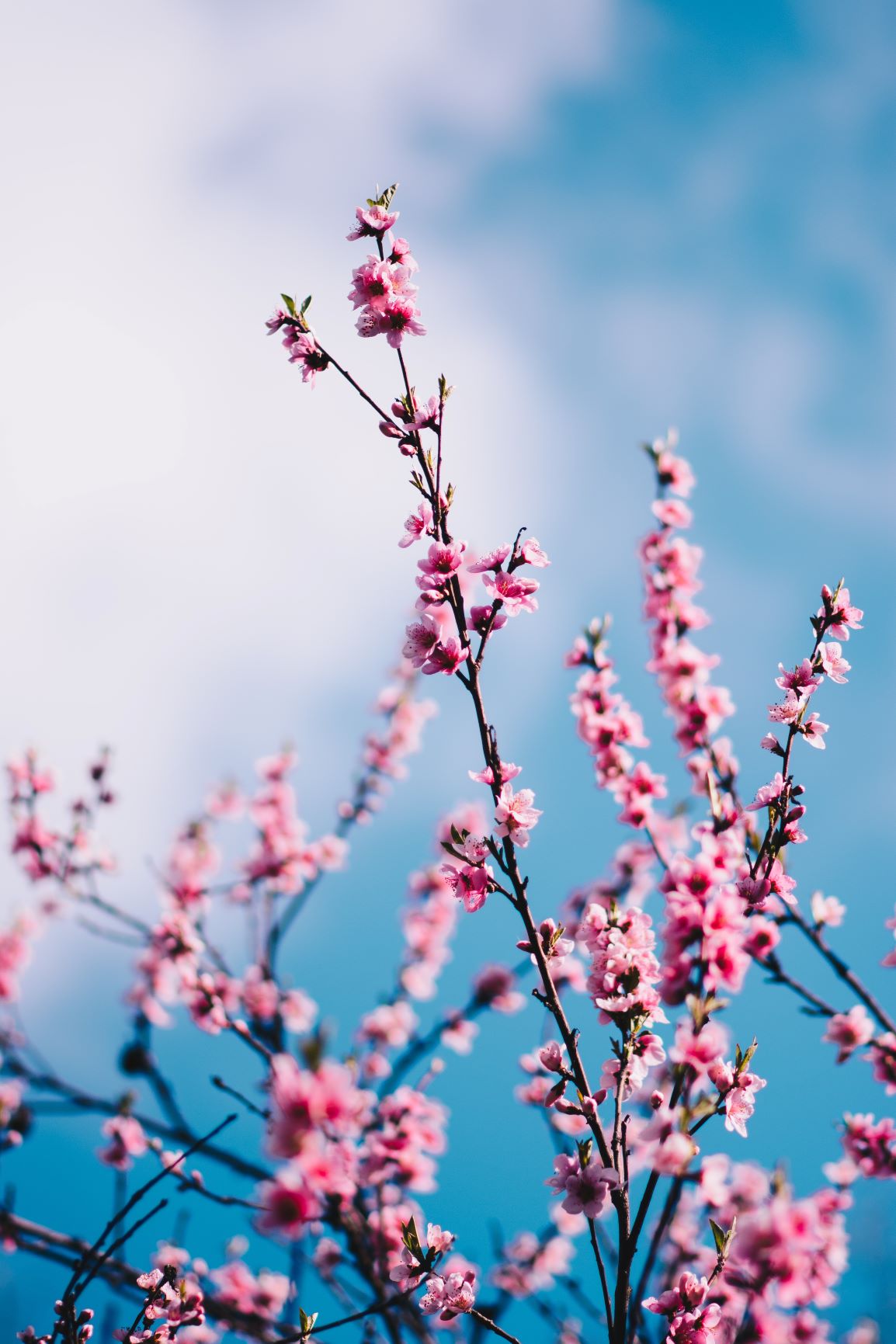Thoov Tree (θʊv)
The Thoov tree is a squat, low tree which produces tiny pink and white blossoms as well as a round, sweet fruit with a tough skin. Though it grows at all lattitudes, it is always located near volcanic activity. It has roots which are good at breaking through rock and ice. Scientists in Brightland have discovered the seeds are activated by heat. The bark of adult trees under heat turns purple, giving the landscape around Thoov trees a purple hue. The bark can also be boiled down into a brilliant purple dye. The Pelan call this Lume and have used it for centuries to dye their Ibi'ans.

Discovery
The Pelan refer to the thoov tree as the Goddess Tree and believe it to be connected to the All Powerful. One uniting myth among the proto-Pelan tribes was that a great evil once tried to destroy the All Powerful with a volcano. The lava swept over her and burned her where she stood, and then the evil attacked the Pelan, who fled. But when they returned to mourn, a tree had grown up where the goddess had stood. The tree spoke to the people. She told them to take her fruit for nourishment, and then taught them how to make her bark into a dye that they could carry her with them wherever they went. She sould give them stength, and they would be forever marked as under her protection. And thus the All Powerful proved that the Pelan did not need to despair for she would always return. This story probably also established the belief that the All Powerful could come to the mortal world and assume any form she pleased.

by Topich
Discovery
Because the Thoov tree is located in several different places on Nideon, it has been discovered several times over, and been used by different people for different reasons. The earliest discovery and use of the tree is by the Pelan people in the 4th century, who used the bark to color their ibi'ans and used the fruit as a source of food for themselves and their mounts, the tusked soles. Anthropologists believe the proto-Pelan tribes returned to southern Feren each spring, during the time the trees would produce fruit. This also may be why the Pelan calendar begins in spring, regardless of hemisphere.
In Brightland, the tree is referred to as the fire tree. Analise Klink is credited with having discovered the method of producing dye from its bark in 862. It was in Brightland that people discovered how to grow them outside of volcanic ash, by activiting the seeds with fire before planting them. Brightland is the only country known to grow thoov trees in farms, with lume being one of the many dyes it exports. Though there are Pelan sellers who sell lume and lume-dyed wool, they primarily sell to other Pelan, and the major worldwide sellers remain mostly in Brightland.
 by Marc Szeg
Xyen explorers found the Thoov tree on the volcanic islands of Igbi and Lowoni in 1005. Though the tree had been used by the Pelan and the Brightlindish for centuries before this, the Xyens are the ones who published wide-spread research on it, thus making the Xyen name the most widespread. Furthermore, it was the scientists at Igbi and Lowani who first made the connection between the Thoov tree they studied and the purple dye found among the Pelan and the Brightlindish.
Modern day scientists have developed methods for tracking volcanic activity, and will sometimes chop down trees preceding a likely eruption, as they will almost certainly be destroyed in the lava flow. These trees are sometimes told to Brightlindish merchants and sometimes to Xyen crafters who use them to make the Sunse, the national instrument. Though thoov sunse are uncommon, they are valued by instrumentalists for their unique timbre.
by Marc Szeg
Xyen explorers found the Thoov tree on the volcanic islands of Igbi and Lowoni in 1005. Though the tree had been used by the Pelan and the Brightlindish for centuries before this, the Xyens are the ones who published wide-spread research on it, thus making the Xyen name the most widespread. Furthermore, it was the scientists at Igbi and Lowani who first made the connection between the Thoov tree they studied and the purple dye found among the Pelan and the Brightlindish.
Modern day scientists have developed methods for tracking volcanic activity, and will sometimes chop down trees preceding a likely eruption, as they will almost certainly be destroyed in the lava flow. These trees are sometimes told to Brightlindish merchants and sometimes to Xyen crafters who use them to make the Sunse, the national instrument. Though thoov sunse are uncommon, they are valued by instrumentalists for their unique timbre.

by Marc Szeg
Xyen explorers found the Thoov tree on the volcanic islands of Igbi and Lowoni in 1005. Though the tree had been used by the Pelan and the Brightlindish for centuries before this, the Xyens are the ones who published wide-spread research on it, thus making the Xyen name the most widespread. Furthermore, it was the scientists at Igbi and Lowani who first made the connection between the Thoov tree they studied and the purple dye found among the Pelan and the Brightlindish.




There is a beautiful myth combined with this plant, and I like that the trees are also made into musical instruments.
Thanks! Glad you enjoyed it.